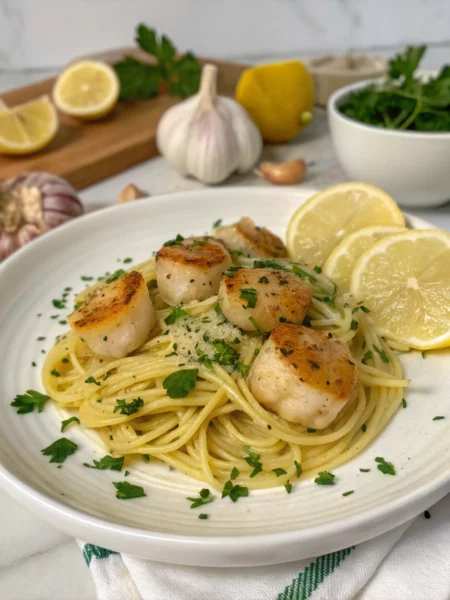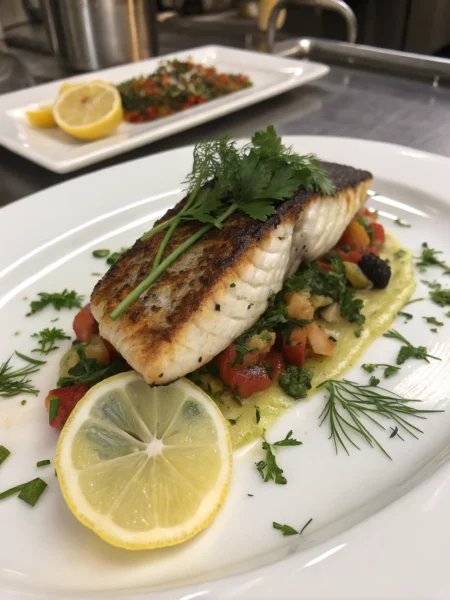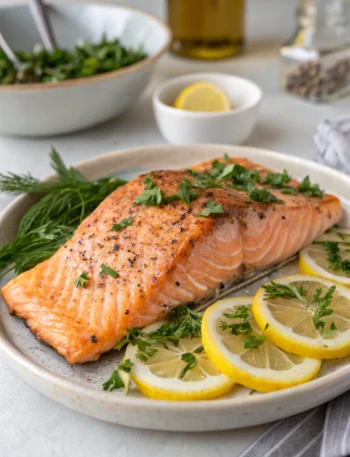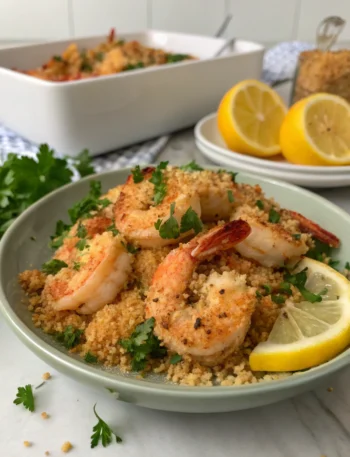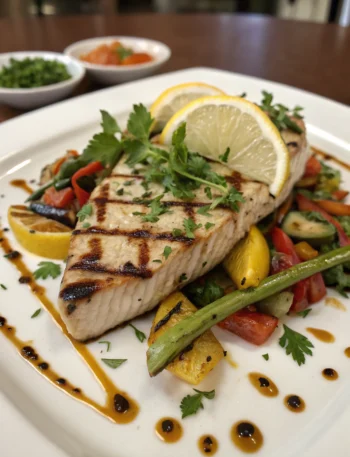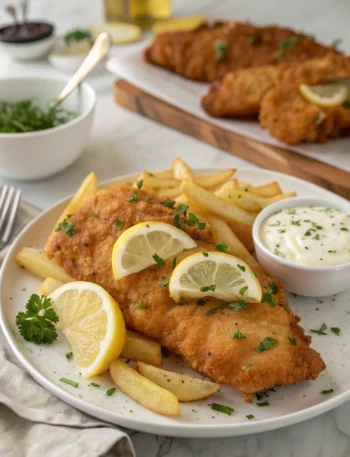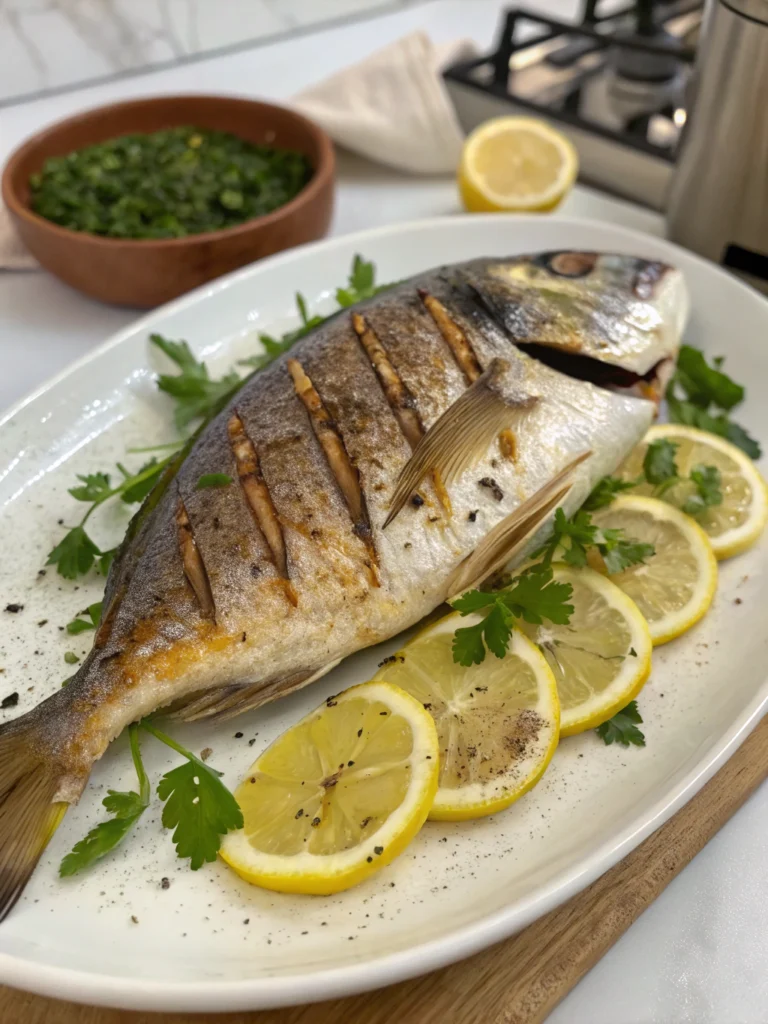
Did you know that pompano fish is considered one of the most valuable food fishes in the United States, yet only 15% of home cooks have ever prepared it? This delicious seafood delicacy offers a mild, sweet flavor that even those who typically shy away from fish might enjoy. If you’re looking to expand your culinary horizons, a delicious pompano recipe could be just what your dinner rotation needs.
Pompano fish belongs to the Carangidae family and is prized for its firm, white flesh and relatively few bones, making it ideal for various cooking methods. Its natural buttery taste requires minimal seasoning, allowing the fish’s inherent flavors to shine through. The flat, silvery fish is particularly popular along the Gulf Coast, where it’s frequently caught fresh and served in upscale restaurants for premium prices.
What makes pompano truly special is its versatility in the kitchen. Whether you prefer grilling, baking, pan-searing, or even steaming, this fish maintains its delicate texture and absorbs flavors beautifully. Pompano fish recipes range from simple preparations highlighting its natural taste to more complex dishes incorporating diverse cultural influences.
Ingredients List of Pompano Recipe
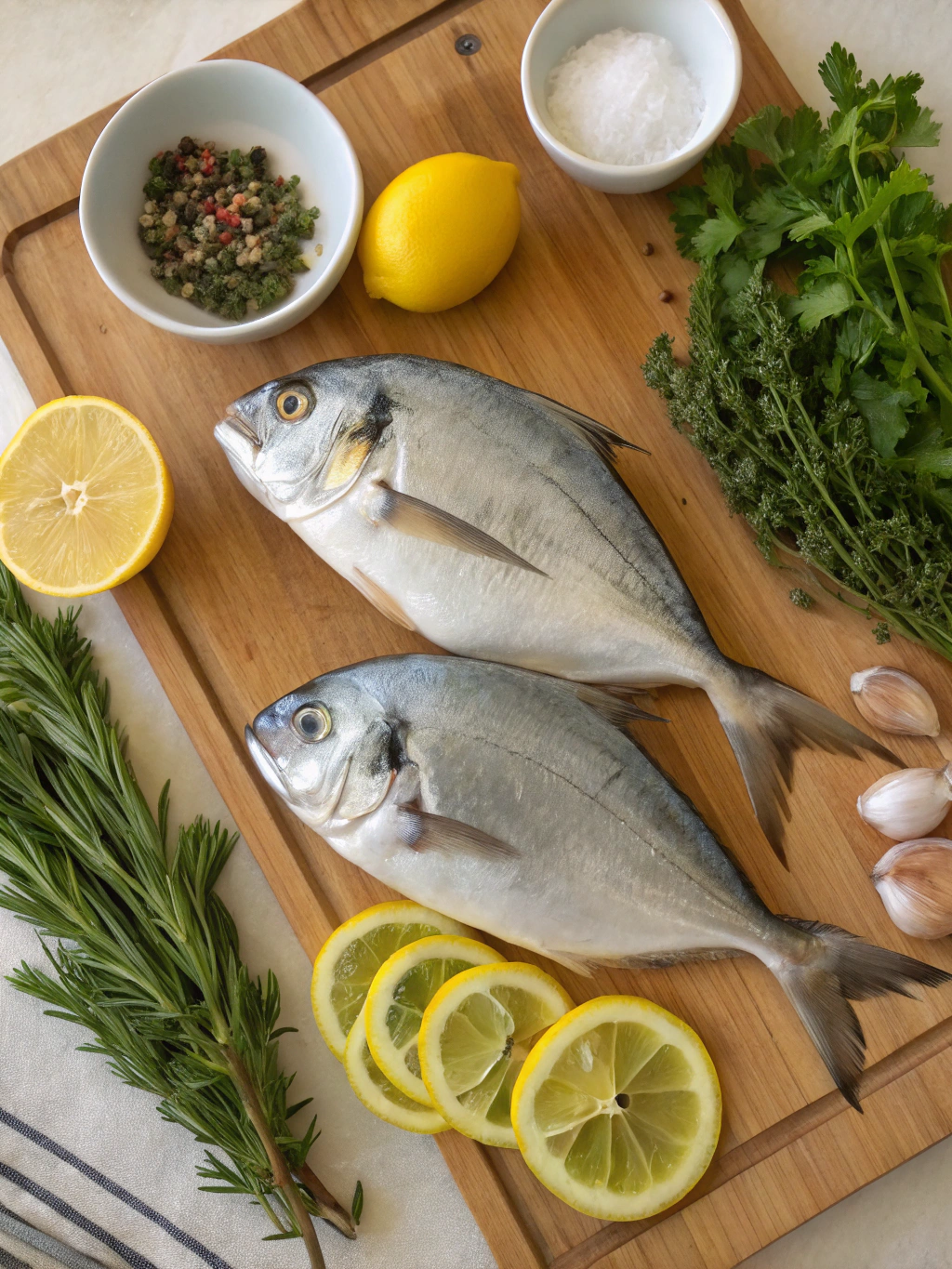
Basic Pompano Preparation (For All Recipes):
- 2 whole pompano fish (about 1 pound each), cleaned and scaled
- 2 tablespoons olive oil
- 1 teaspoon sea salt
- ½ teaspoon freshly ground black pepper
- 2 lemons, sliced
- Fresh herbs (parsley, dill, or cilantro)
Additional Ingredients By Recipe Style:
For Grilled Pompano with Herb Butter:
- 4 tablespoons unsalted butter, softened
- 2 cloves garlic, minced
- 1 tablespoon fresh herbs (mixture of parsley, thyme, and dill)
- ½ teaspoon lemon zest
For Baked Pompano with Mediterranean Flavors:
- 1 cup cherry tomatoes, halved
- ¼ cup Kalamata olives, pitted and sliced
- 2 tablespoons capers, drained
- 3 cloves garlic, thinly sliced
- ¼ cup dry white wine
For Asian-Inspired Steamed Pompano:
- 3 tablespoons soy sauce
- 1 tablespoon rice vinegar
- 1 tablespoon sesame oil
- 1-inch piece ginger, julienned
- 2 scallions, sliced
- 1 Thai chili, thinly sliced (optional)
For Cajun Blackened Pompano:
- 2 tablespoons Cajun seasoning
- 1 tablespoon paprika
- 1 teaspoon garlic powder
- 1 teaspoon onion powder
- ¼ teaspoon cayenne pepper
For Pan-Seared Pompano with Citrus Salsa:
- 1 orange, segmented and chopped
- 1 grapefruit, segmented and chopped
- ½ red onion, finely diced
- 1 jalapeño, seeded and minced
- ¼ cup fresh cilantro, chopped
- 1 tablespoon lime juice
Timing
Preparation Time: 15-20 minutes (including cleaning fish if not already prepared by your fishmonger)
Cooking Time: Varies by method – grilling (8-10 minutes), baking (15-18 minutes), steaming (10-12 minutes), blackening (6-8 minutes), pan-searing (5-7 minutes per side)
Total Time: Approximately 25-40 minutes, which is notably quicker than the average fish dinner preparation of 45-60 minutes. This efficiency makes pompano recipes perfect for weeknight meals when time is limited.
Step-by-Step Instructions of Pompano Recipe
Recipe 1 – Grilled Pompano with Herb Butter
- Prepare the herb butter by mixing softened butter with minced garlic, fresh herbs, lemon zest, and a pinch of salt. Set aside.
- Pat the pompano dry with paper towels and make 3-4 diagonal slashes on each side of the fish.
- Brush fish with olive oil and season with salt and pepper.
- Preheat grill to medium-high heat (approximately 400°F).
- Place fish on the grill and cook for 4-5 minutes per side until the flesh is opaque and flakes easily.
- Top the hot grilled fish with herb butter and allow it to melt before serving with lemon wedges.
Recipe 2 – Baked Pompano with Mediterranean Flavors
- Preheat oven to 375°F.
- Place pompano on a baking sheet lined with parchment paper.
- In a bowl, combine tomatoes, olives, capers, and garlic.
- Stuff some of the mixture inside the fish cavity and scatter the rest around the fish on the baking sheet.
- Drizzle with olive oil and white wine, then season with salt and pepper.
- Bake for 15-18 minutes until the fish is cooked through and flakes easily.
- Garnish with fresh herbs before serving.
Recipe 3 – Asian-Inspired Steamed Pompano
- In a small bowl, mix soy sauce, rice vinegar, and sesame oil.
- Place pompano on a heat-proof plate that will fit in your steamer.
- Pour half the sauce over the fish and stuff the cavity with half the ginger and scallions.
- Set up a steamer and bring water to a boil.
- Place the plate with fish in the steamer, cover, and steam for 10-12 minutes until the fish is opaque.
- Sprinkle with remaining ginger, scallions, and chili if using.
- Drizzle with remaining sauce just before serving.
Recipe 4 – Cajun Blackened Pompano
- Mix all Cajun seasonings in a small bowl.
- Pat pompano completely dry (crucial for blackening technique).
- Brush fish with oil and generously coat both sides with the Cajun spice mix.
- Heat a cast-iron skillet until smoking hot.
- Place fish in the hot skillet and cook for 3-4 minutes per side until a dark crust forms and the fish is cooked through.
- Let rest for 2 minutes before serving with lemon wedges.
Recipe 5 – Pan-Seared Pompano with Citrus Salsa
- Prepare the citrus salsa by combining orange, grapefruit, red onion, jalapeño, cilantro, and lime juice. Season with salt and set aside.
- Season pompano with salt and pepper.
- Heat olive oil in a large non-stick skillet over medium-high heat.
- Place fish in the pan and cook for 5-7 minutes on each side until golden and cooked through.
- Serve immediately topped with the fresh citrus salsa.
Nutritional Information
Per Serving (based on one pompano fillet with basic preparation):
- Calories: 240
- Protein: 32g
- Fat: 12g (Healthy omega-3 fatty acids: 2.3g)
- Carbohydrates: 0g
- Cholesterol: 70mg
- Sodium: 320mg
- Potassium: 510mg
Pompano is particularly notable for its high selenium content (provides 84% of daily requirements per serving), which supports thyroid function and immune health. It’s also rich in vitamin B12, phosphorus, and niacin.
Healthier Alternatives for the Recipe
For those watching their caloric intake, consider these modifications to the standard pompano recipes:
- Replace butter with olive oil or avocado oil to reduce saturated fat while maintaining flavor.
- For a lower-sodium option, reduce salt and increase flavor with fresh herbs and citrus zest.
- Those following a gluten-free diet can easily enjoy all these recipes as they’re naturally gluten-free.
- For a carb-conscious meal, serve your pompano with a side of steamed vegetables instead of rice or potatoes.
The heart-healthy benefits of pompano make it an excellent choice for those following Mediterranean or DASH diet principles.
Serving Suggestions
Pompano pairs beautifully with light, fresh sides that complement its delicate flavor. Consider serving with:
- Steamed asparagus or green beans tossed in lemon juice and olive oil
- A bright arugula salad with shaved fennel and citrus segments
- Herbed quinoa or cauliflower rice for a nutritious base
- Roasted baby potatoes with rosemary and garlic
- Grilled summer vegetables tossed in a light vinaigrette
For wine pairings, opt for crisp whites like Sauvignon Blanc, Albariño, or Pinot Grigio to complement the fish without overpowering it.
Common Mistakes to Avoid
Overcooking: Perhaps the most common mistake when preparing pompano is overcooking. The fish should remain moist and flake easily. According to culinary data, for every half-inch of thickness, fish typically needs only 4-5 minutes of cooking time.
Heavy Seasoning: Pompano’s natural flavor is delicate and buttery. Avoid heavy, complex seasoning blends that might mask its inherent taste.
Skipping Pat-Dry Step: Not thoroughly drying the fish before cooking can prevent proper browning and may result in steaming rather than searing.
Wrong Heat Level: Using too low heat when searing or grilling can cause the fish to stick to cooking surfaces and fall apart during flipping.
Improper Thawing: If using frozen pompano, thaw it slowly in the refrigerator rather than using quick-thaw methods, which can damage the texture.
Storing Tips for the Recipe
For maximum freshness, pompano should be cooked the same day it’s purchased. If necessary, store raw pompano in the coldest part of your refrigerator for up to 2 days, wrapped tightly in plastic and placed on ice.
Cooked pompano can be refrigerated for up to 3 days in an airtight container. Reheat gently in a 275°F oven for 10-15 minutes to avoid drying out the fish. For best taste, however, pompano is truly exceptional when served fresh from cooking.
If you’ve purchased extra fish, pompano freezes well for up to 3 months when properly wrapped in freezer paper followed by plastic wrap or placed in airtight freezer bags with air removed.
Conclusion
These five pompano recipes showcase the incredible versatility of this often-overlooked fish. From the smoky char of Cajun blackening to the delicate flavors of Asian steaming, pompano adapts beautifully to various cooking methods while maintaining its signature buttery texture and mild sweetness.
Don’t let unfamiliarity keep you from trying this exceptional seafood option. With its quick cooking time, impressive nutritional profile, and crowd-pleasing flavor, pompano deserves a regular spot in your seafood rotation. Whether you’re an experienced fish cook or just beginning to explore beyond the typical salmon and tuna, these pompano preparations offer something for every palate and skill level.
Have you tried cooking pompano? Share your experience or favorite preparation method in the comments below. And if you enjoyed these recipes, explore our other seafood guides for more inspiration!
FAQs
What does pompano fish taste like?
Pompano has a mild, sweet flavor with a hint of butter. Its flesh is firm yet tender with a clean taste that isn’t overly “fishy,” making it appealing even to those who typically shy away from seafood.
Where can I buy pompano fish?
Fresh pompano is most readily available in coastal areas, particularly along the Gulf of Mexico. Look for it at specialty seafood markets, fish counters in well-stocked grocery stores, or consider online seafood delivery services. Frozen pompano is more widely available throughout the country.
What’s the best cooking method for pompano?
Pompano excels with nearly any cooking method, but grilling and pan-searing are particularly popular as they develop a delicious crust while preserving the moisture of the flesh. For beginners, baking is the most foolproof method.
Can I substitute another fish for pompano?
If pompano isn’t available, consider flounder, snapper, or black sea bass as substitutes. These fish have similar texture and flavor profiles, though none quite match pompano’s distinctive buttery quality.
Is pompano high in mercury?
Pompano is considered a low-mercury fish, making it a safe choice for regular consumption and appropriate for pregnant women and children when eaten in moderation (2-3 servings per week).



